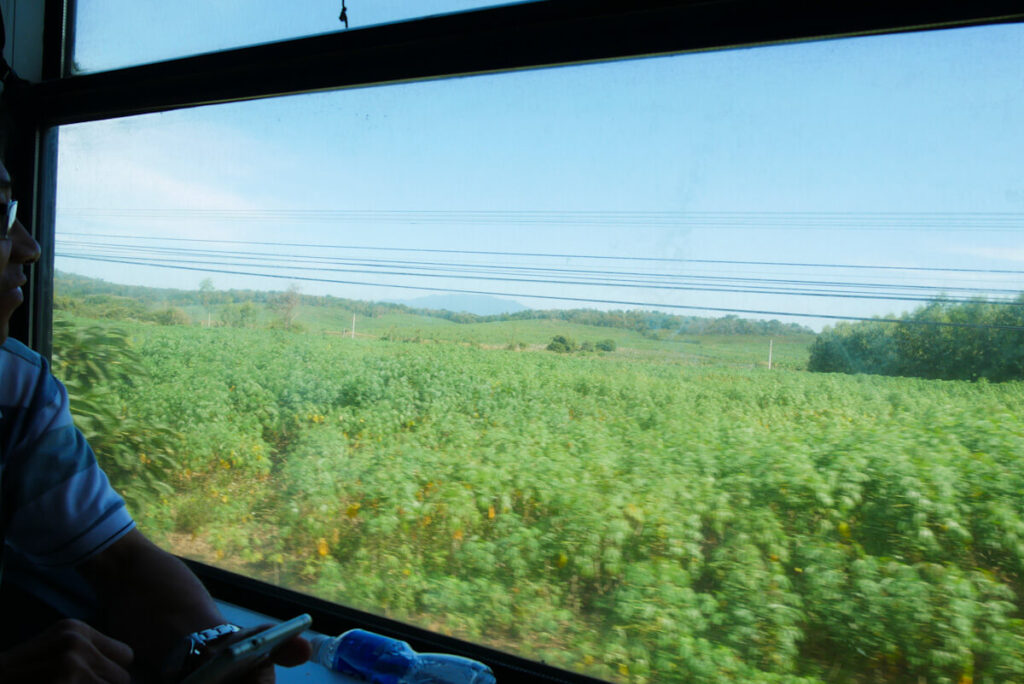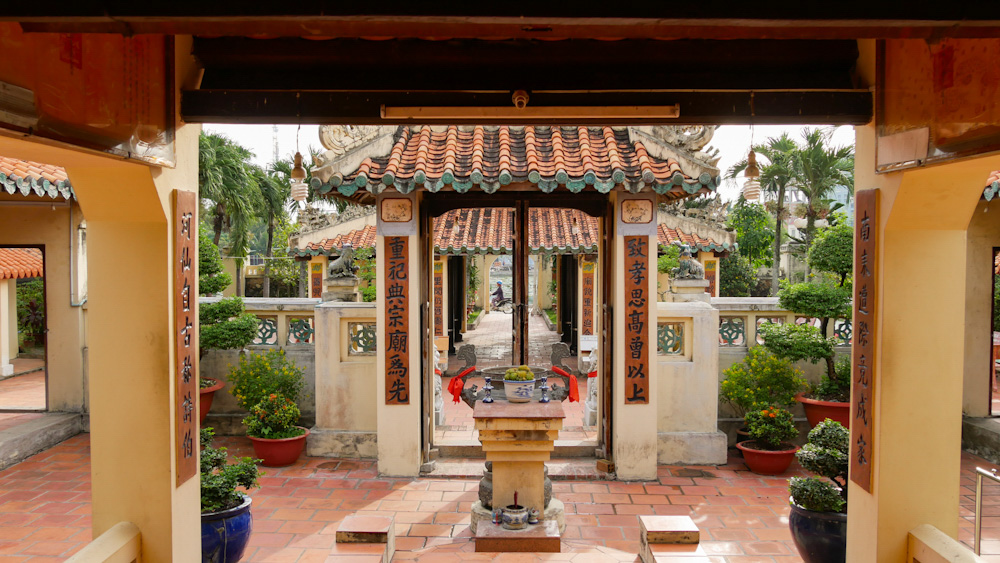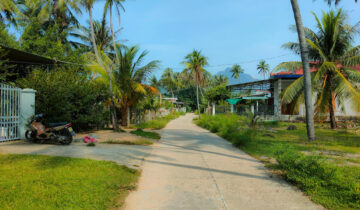Avoiding Saigon’s notorious traffic, I take advantage of one of Vietnam’s only train services to allow you to travel together with your bicycle.
One train a day (each way) makes the four-hour journey from Saigon (Ho Chi Minh City) to Phan Thiet, a regional town which is also the gateway to the popular resort area of Mui Ne. This is a more pleasant, interesting and faster option than travelling by long-distance bus, though that’s ok too. It all depends on your logistics.

Timetables and logistics
The train leaves Saigon Station at 6.40am daily, arriving in to Phan Thiet just before 11.00am. It then makes the return journey, leaving Phan Thiet railway station at 1pm.
Tickets are quite reasonable, and only slightly more expensive than the bus, which is great considering you are getting a much shorter and more comfortable journey.
Taking your bike or motorbike on the train is pretty easy, but take note of these instructions as there is no signage in English and little spoken by the early morning staff at the station.
Buying a ticket: passengers and bikes
There are various travel agents online services (such as BaoLau) that will allow you to book a train ticket in advance and receive a ticket by email – but only for yourself, not your bicycle.
If you are travelling with a bicycle or motorbike, you’ll need two tickets – one for you, and one for your wheels. And the only way to get that bike ticket is in person, at the ticket desk.
Travelling from Saigon, the train goes before the ticket office opens, meaning the most practical option is to stay overnight one of the many hotels right near the station. Hotels here do get busy, so book in advance.
IMPORTANT: you will need your passport with you to buy train tickets. This might mean negotiating with your hotel if they want you to hand it them as security.
Leaving from Phan Thiet will be much simpler but aim to get there one hour before to leave enough time.
I rocked up to the Saigon ticket office (advertised hours 7.30am to 7.30pm) at 7pm and was absolutely fine. It was pretty easy to find – walk through the main entrance, past a bunch of food outlets, and look for a low table in the middle of the corridor.
After paying for a ticket I was then directed to a separate attendant to buy a bicycle ticket. This was the same as you would pay for a motorcycle and about $1USD more than the passenger fare. I guess they want to keep a lid on the number of vehicles on board.
Whichever way you are travelling around 30 minutes before the train leaves.
Putting your bike on the train
In Saigon, you’ll need to take your bike to a gate to the left of the main station entrance, pictured below.
On approaching the gate don’t freak out if a guard greets you with a big “NO”. That’s simply their limited English way of telling you you’ll need to wait until the train pulls in.

Sit and have a coffee, then, once everyone is ready, simply wheel your bike through the gate, across the tracks and up on to Platform Two. Look for other bikes, Show your ticket one more time to the attendant who loads bikes in to the cabin (don’t try to do it yourself unless you want to get yelled at).
Be aware that the train rocks around a good deal once it gets going, so it’s fair to assume your bike will get thrown onto its side during the journey. Protect the rear derailleur accordingly: I used a low-tech solution involving a cut-up water bottle and some duct tape.
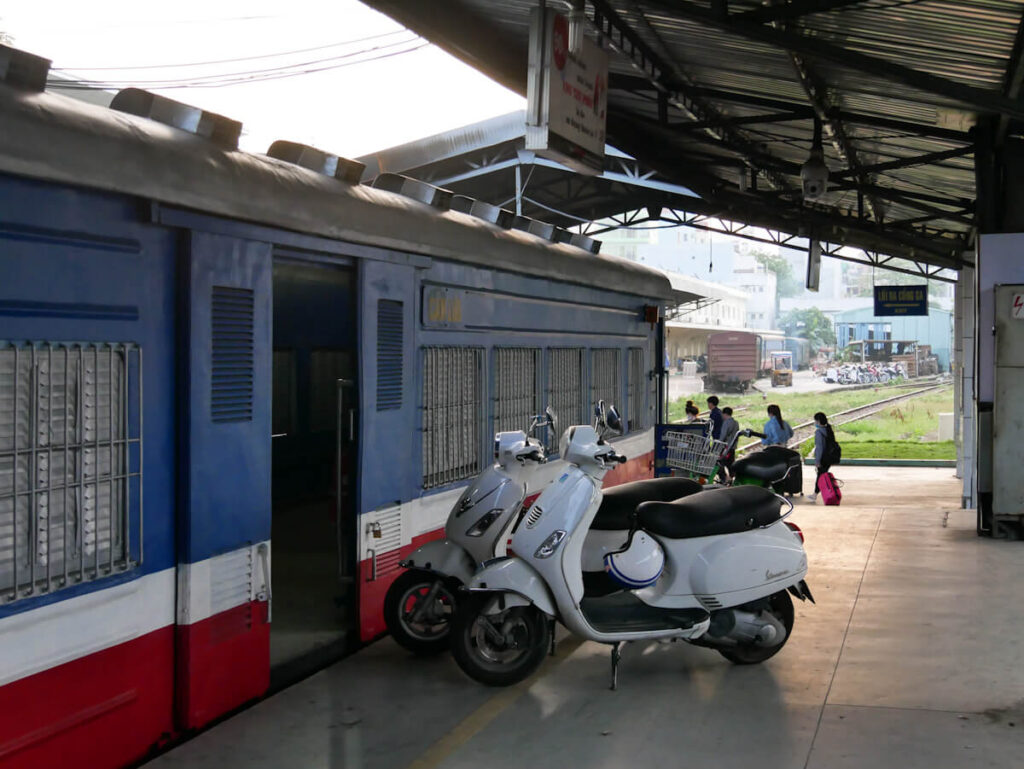
The train journey
The train journey itself is really quite pleasant, with soft seats, decent bathroom and a dining car.
In my cabin a French expat family were heading off on holiday with two pet chihuahuas on board, so expect the rules to be more relaxed than in the West!

The views aren’t remarkable overall, but are best closer to Phan Thiet where you can gaze across to the mountains of Vietnam’s highlands in the distance beyond acres of dragonfruit plantation.
Travelling through the outer Saigon is also eye-opening in terms of just how close the houses are to the rail line – there are clothes drying and front doors just a few metres from the passing train.
It’s also a reminder of just how busy this city is. At one level crossing I looked out onto a jaw-dropping sea of motorbikes waiting for the train to pass. There must have been thousands, stretching out as far as the eye could see.
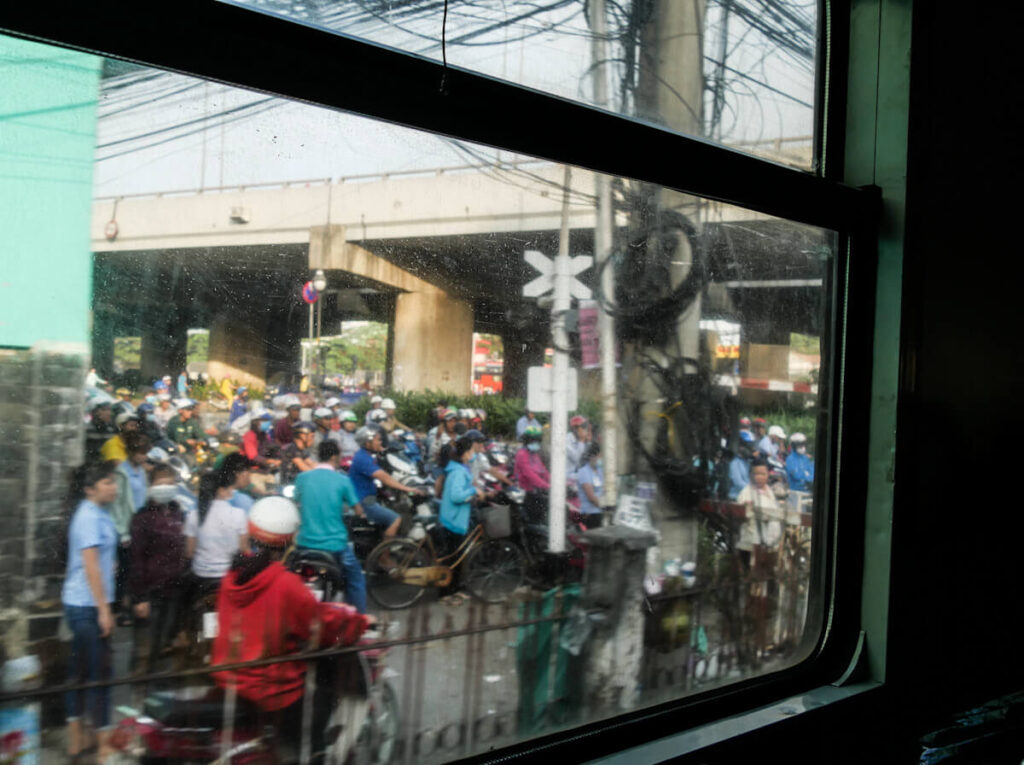
Collecting your bike on the platform
Stepping off the train in Vietnam’s heat will be a bit of a shock after the air conditioned comfort of the train, but collecting your bike is not too much of a hassle – providing you have your paper ticket handy to show proof of ownership. It’s a very good idea NOT to lose your ticket.
In fact mine was waiting for me right then and there on the platform and it was simply a matter of riding off.
Arriving to Phan Thiet train station, you have two choices for accommodation. Stay overnight in the city of Phan Thiet itself, or push on to the beach resort area of Mui Ne.
Arriving to Ho Chi Minh City / Saigon, the station is handily located between the airport and city centre, with a street full of budget hotels just around the corner and plenty of taxis around.
If you’re travelling North to South, it’s also possible to cycle right down the coast to Vung Tau, and take the ferry straight in to the centre of Saigon, also avoiding the traffic.
